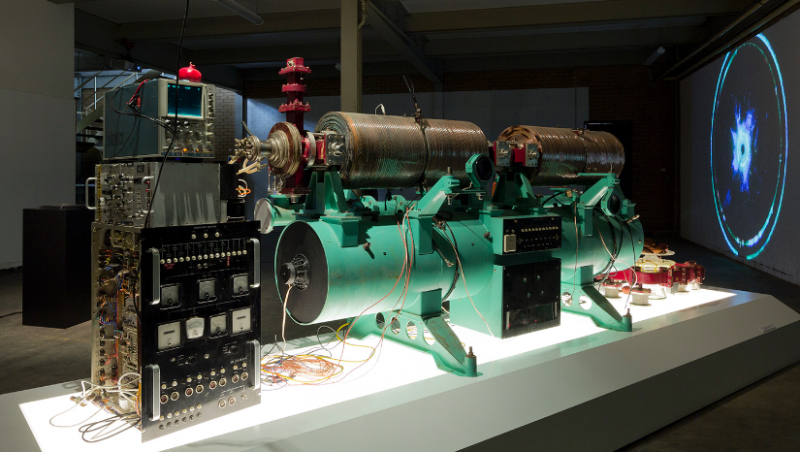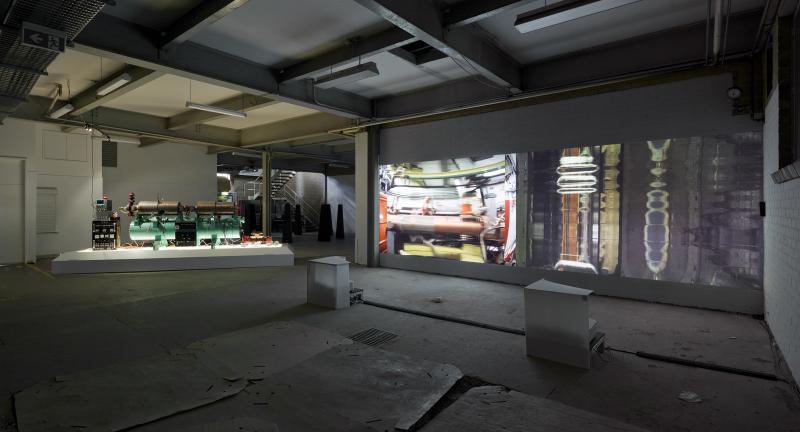This article was originally published at http://thearticle.com.au/2017/10/song-of-the-phenomena-expelling-demons-from-within/. All photos shown here are by Christian Capurro.

Making art is like exhaling: it expels the demons from within,” Chris Henschke says. There is something of the mad scientist about Henschke. He tinkers with space and perception, mirrors and modeling, woodwork and technology, going so far as to concoct unique experiments at the Australian Synchrotron in Melbourne. “This allows one to ‘see’ the spectrum of light energy from microwaves to x-rays and look at objects at scales of a millionth of a metre…” he says.
Chris Henschke is an artist who works with digital and analogue media, sound and light, and high-energy physics. He has just completed a Doctorate of Philosophy at Monash University, which includes on-site work at the European Organization for Nuclear Research (CERN), Switzerland, as part of the ‘art@CMS’ collaboration. This research into how we use technology to interact with the subatomic universe culminated in his particle accelerator installation ‘Song of the Phenomena’, showing at |not|fair| in November.

‘Song of the Phenomena’, which premiered at debuted in ‘Morbis Artis: Diseases of the Arts’, RMIT Gallery, Melbourne, November 2016 – February 2017, is energetically activated by subatomic particles emitted from fruit slowly decomposing in a bowl next to the machine. As Henschke explains, “the LINAC [linear accelerator] is activated by natural radiation from the atomic decay of potassium in the organic material.”
In Sam Leach’s review of ‘Morbis Artis: Diseases of the Arts , Leach describes how, “this activation takes the form of uneasy sound and noise. The accelerator is huge. A hulking beast of a machine with oversized copper coils exuding like metallised entrails. The sense of mass is palpable, as though we can feel its gravitational pull. And yet this machine is seemingly floating on a streamlined, glowing plinth, as though defying the physics of its scientific heritage. Henschke has made this machine into a massive analogue synthesiser – playing the subatomic orchestrations of rotting and putrefying vegetation.”

Born in Melbourne in 1972, Henschke has been working with digital media since 1988. His main areas of research are in sound and visual relationships, interactivity, and art / science hybrids. His artworks have been shown across Australia and internationally, including the National Gallery of Australia (2004), the Australian Centre for Contemporary Art (2001) and MILIA 99 (France, 1999). He has worked with the Australia Council for the Arts, ANAT (Australian Network for Art and Technology) and the CSIRO. He lectures in art at the Victorian College of the Arts and sound at RMIT University, and was recently Artist in Residence at the Australian Synchrotron.
|not|fair| was held during 11–19 November 2017, at 12 James St, Windsor VIC. For more information please visit the |not|fair| website.
The artists wishes to thank Mark Boland, Tom Lucas, Troy and Lindon Davey-Milne, and Suzanne Davies. Images are courtesy of the artist.
The views expressed in CMS blogs are personal views of the author and do not necessarily represent official views of the CMS collaboration.
